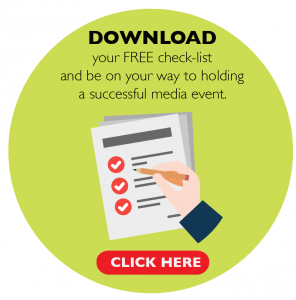Overheard while walking the halls of large technology company – “The new feature is built around ephemerality, and we are in-roading programmatic integration”
If that sentence made you slightly queasy, you are not alone. Technology rushes forward and language can sometimes barely keep up. To compensate, many of us resort to linguistic shorthand – acronyms, technical jargon, or even brand new invented words.
That’s all well and good when discussing internally – but eventually we need to shout about our products from the hills. And screaming – “IT’S AN INTEGRATED HOLISTIC PLATFORM THAT ENABLES THE AUTOMATION AND DIGITISATION OF INFORMATION THROUGH SELF-LEARNING ALGORITHMS!” – is not an inspiring war cry.
So here are a few tips when we need to talk about new things.
Articulate the value you’re giving to customers
My favourite quality in a spokesperson is passion and pure excitement about innovation. They are usually experts in their fields, and sometimes the brains behind breakthroughs. But sometimes, they get too excited about the process, they forget to talk about the results. In building a narrative, start with the customer. What problems are they facing or why would they like your product? Instead of talking about nuts and bolts of self-learning algorithms, talk about what that could mean in terms of cost-savings and efficiencies.
Use Analogies, but avoid cliches
One of the most elegant ways that Open Source coding was explained to me through this analogy.
“Imagine buying Car A – you can drive it, but no one is allowed to look under the hood. If anything goes wrong, you’d only be able to take it back to the manufacturer’s garage. The manufacturer’s mechanics would be the only people to work on the engine. That’s Closed Source coding. Now imagine buying Car B – you can drive it, and anyone can look under the hood this time. Any licensed mechanic would also be able to look at the engine – and in fact compare your engine to other newer engines and make modifications. That’s Open Source coding.”
While one could nit-pick the technicality of the analogy, this is still a good primer for a non-technical person to understand something new. With the consumerisation of technology and more IT decisions being made by non-IT professionals, the ability to convert technical concepts to plain speak is becoming more essential.
Graphics are worth a thousand words
While analogies are great, sometimes words hit a barrier when it comes to explaining things – especially for very abstract concepts. You could always try multiple analogies, or pouring more words in, but sometimes a much more effective solution is the deployment of visuals to clarify things.
I highly recommend this YouTube channel – Kurzgesagt – In a Nutshell. It’s a great example of how effective visuals can help explain difficult concepts, like Universal Incomes or the science behind GMO foods. And of course, statics graphics can work just as well.
Ultimately, the trick is to start with your customers. What do they know and understand? What touchpoint would they relate to? Once you meet them on their side of the bridge with something they understand, that’s when you can guide them along your narrative journey.
Need help with your PR strategy? Drop us a message at [email protected]


